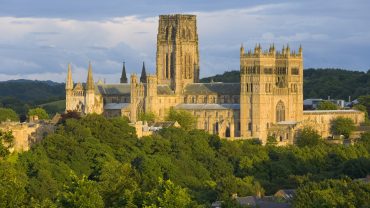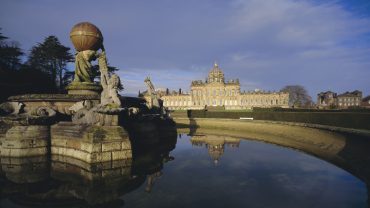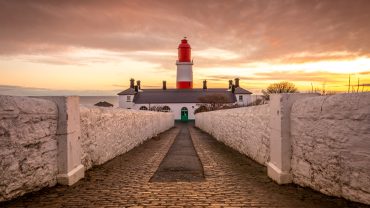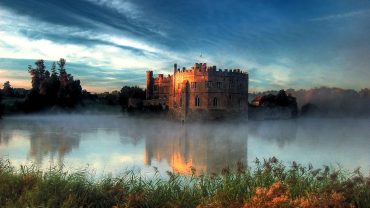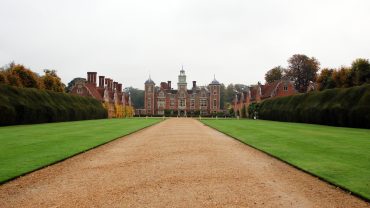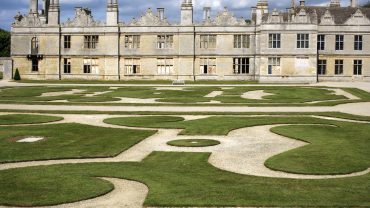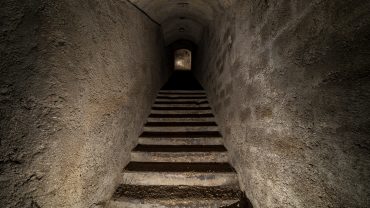The UK is home to an unrivalled collection of historic houses, castles, and country estates. From the stately grandeur of Elizabethan and Georgian mansions to the atmospheric ruins of medieval fortresses, these buildings are chronicles of the people, politics, and artistry that have shaped Britain for centuries.
Yet the survival of these remarkable homes has never been guaranteed. War, economic hardship, and changing tastes have left many once-magnificent properties in states of severe neglect or even near collapse. Without timely intervention, countless icons of British heritage would have been lost forever. Fortunately, a passionate movement of conservationists, private owners, charities, and communities have embraced the immense challenge of restoration. Through painstaking research, traditional craftsmanship, and innovative adaptation, they’ve not only rescued these homes from ruin but also ensured they remain vibrant, accessible, and relevant in the modern age.
Journey through ten of the nation’s most dramatic renovated historic homes, where stately mansions, castles, and literary landmarks have been painstakingly brought back to life, preserving the soul of British history.
Dunvegan Castle, Isle of Skye

Dunvegan Castle, Isle of Skye, Scotland (Credit: SteveMartin via Getty Images)
Dunvegan Castle, on a rocky outcrop overlooking Loch Dunvegan on the Isle of Skye, is recognised as the oldest continuously inhabited castle in Scotland and the ancestral seat of the Clan MacLeod. The site’s fortifications date back to the thirteenth century, with significant expansions over the centuries, including a four-storey tower house in the late fourteenth century and the Fairy Tower around 1500, built by the eighth chief, Alasdair Crotach. The castle’s appearance was unified in the nineteenth century with mock-medieval battlements and turrets. It’s a heady mix of medieval, Jacobean, Victorian, and modern elements accumulated over more than eight centuries.
Despite its illustrious history, Dunvegan suffered periods of neglect, particularly before the nineteenth century remodelling and again in the twentieth century, when maintenance challenges mounted. In recent decades, the thirtieth chief, Hugh Magnus MacLeod of MacLeod, has led this historic house restoration with extensive repairs and ambitious works to secure the castle’s future, including structural stabilisation, roof repairs, and the conservation of its historic interiors. Still privately owned by the MacLeod family, Dunvegan Castle remains a celebrated symbol of Scottish heritage.
Stowe House, Buckinghamshire

Stowe House, Buckinghamshire (Credit: Graham Custance Photography via Getty Images)
Stowe House in Buckinghamshire is one of England’s grandest stately homes. The estate’s origins date back to the sixteenth century, and the current house began taking shape from 1677 under politician Sir Richard Temple. There were major expansions in the eighteenth century by renowned architects including John Vanbrugh, William Kent and James Gibbs, and landscape designer Capability Brown.
Stowe’s decline began in the nineteenth century. Indeed it’s believed the owner at the time, the 2nd Duke of Buckingham and Chandos, had debts of £1.5 million in the 1840s, equating to well over £100 million today. The estate’s contents were sold in 1848, and the house itself was sold in 1921. Two years later, it was bought by the governors of Stowe School, saving it from further ruin.
By the 1990s, Stowe House was in a challenging state. The Stowe House Preservation Trust was established in 1997 to oversee a comprehensive restoration. Over £27 million has since been spent, addressing critical structural issues, restoring interiors, and reviving the house’s eighteenth century grandeur. Today, Stowe House, one of the most beautiful restored historic homes in the UK, is both an exclusive public school and a public heritage site, lauded for its successful rescue and ongoing preservation.
Jane Austen’s House, Hampshire

Jane Austen’s House, Hampshire (Credit: naumoid via Getty Images)
Jane Austen’s House, a charming seventeenth century cottage in the Hampshire village of Chawton, is where the famous novelist lived from 1809 until her death in 1817. The house was originally built in the late 1600s and served as a farmhouse, and briefly, a pub. It became the Austen family’s home when Jane’s brother, Edward Austen Knight, offered it to his mother and sisters. It was in this house where she revised and wrote her most celebrated novels, including Pride and Prejudice, Northanger Abbey, Sense & Sensibility, Mansfield Park, and Emma.
Following her sister Cassandra’s death in 1845, the house was divided into rooms for labourers, and by the start of the twentieth century, it had turned into a working man’s club, by which time it gradually fell into disrepair. In 1947, it was bought by the Jane Austen Memorial Trust, funded by public subscription for £3,000. The Trust undertook careful restoration, preserving its original features and period furnishings. Today, Jane Austen’s House is a museum, lovingly maintained as a literary shrine and one of the most famous renovated historic homes in England, welcoming visitors from all over the world.
Basildon Park, Berkshire

Basildon Park, Berkshire (Credit: Peter Fleming via Getty Images)
One of the most impressive renovated historic homes in the UK, Basildon Park in Berkshire is a grand Palladian mansion built between 1776 and 1783 for Sir Francis Sykes, who made his fortune with the East India Company. Designed by John Carr, the house features neoclassical interiors and was intended as a symbol of Sykes’s wealth and social ascent. The Sykes family owned it until 1838, when it was bought by businessman, art collector, and one-time MP James Morrison, widely considered to be one of Victorian England’s richest men.
Morrison died there in 1857, after which his daughter lived there until she herself died in 1910. This was the start of the house’s decline. It fell into the hands of a nephew of Morrison who used it for parties, and it was then requisitioned by the government as a convalescence home for soldiers injured in World War I. The nephew’s lavish lifestyle and three marriages meant the upkeep of Basildon took a back seat and he was forced to sell in 1929. By then, the house has been stripped of fittings and left derelict.
By the 1950s, the house was near ruin, with broken windows and makeshift repairs. In 1952, British peer and newspaper magnate Lord Iliffe and his wife, Renée Merandon du Plessis, bought Basildon Park, and dedicated much of the rest of their lives to a major antique house restoration project, recreating its structure, interiors, and gardens. Their efforts revived the estate, and in 1978 they gifted it to the National Trust, along with a large endowment, ensuring its preservation for future generations.
Leeds Castle, Kent

Leeds Castle, Kent (Credit: ptaxa via Getty Images)
Leeds Castle in Kent, often described as “the loveliest castle in the world,” was originally built in 1119 by Robert de Crevecoeur as a Norman stronghold on islands in the River Len. In 1278, it was acquired by Queen Eleanor of Castile, wife of Edward I, who transformed it into a royal palace. Over the centuries, Leeds Castle became a favourite residence for English queens and was lavishly upgraded by Henry VIII for his first wife, Catherine of Aragon.
Over the centuries, the castle passed through a number of different owners, and by the early nineteenth century, the castle had fallen into serious disrepair – reports in 1821 described ruined mills, collapsing towers, and decaying interiors. Fiennes Wykeham Martin inherited the castle in 1821 and undertook a major rebuilding, demolishing the Jacobean house and creating one of the world’s most stunning restored historic homes in the Tudor style by 1823.
In around 1926 or 1927, it was bought for £180,000 by Anglo-American heiress Olive Paget and her English husband, Arthur Wilson-Filmer. After divorcing Wilson-Filmer in 1930 (retaining possession of Leeds Castle) and marrying Sir Adrian Baillie the now Olive, Lady Baillie, spent much of the rest of her life (and more than a million pounds) restoring its interiors and gardens. When she died in 1974, she left the castle in trust for public enjoyment, ensuring its preservation and continued splendour.
The Vyne, Hampshire

The Vyne, Hampshire (Credit: AmandaLewis via Getty Images)
The Vyne, near Basingstoke in Hampshire, is a Grade I-listed Tudor mansion built between 1500 and 1510 for William Sandys, 1st Baron Sandys, who served as Lord Chamberlain to Henry VIII. Originally a vast palace built to rival Hampton Court, it hosted royal visitors including Henry VIII and Elizabeth I. The estate passed to the Chute family in the mid-seventeenth century, and Chaloner Chute, once Speaker of the House of Commons, reduced its size and added England’s first classical portico in 1654.
The mansion underwent a series of expensive restoration projects throughout the eighteenth and nineteenth centuries but by the mid-twentieth century, it faced structural decline, including a leaking roof and crumbling chimneys. The house stayed in the Chute family until the late 1950s when Charles Chute bequeathed The Vyne to the National Trust. A major £5.4 million restoration project, completed in the 2010s, replaced the entire roof, stabilised the structure, and preserved its Tudor and later features, ensuring The Vyne’s continued survival and public enjoyment as one of the most fascinating restored historic homes in the UK.
Castle Howard, Yorkshire

Castle Howard, Yorkshire (Credit: andrewhoughton via Getty Images)
Castle Howard in North Yorkshire is one of Britain’s most iconic stately homes and has been the seat of the Howard family for over three hundred years. Commissioned in 1699 by Charles Howard, 3rd Earl of Carlisle, the house was designed by dramatist John Vanbrugh and architect Nicholas Hawksmoor. Construction spanned more than a century, with the final touches completed in 1811, resulting in a striking blend of Baroque and Palladian styles.
Despite its grandeur, Castle Howard faced significant decline in the twentieth century. In 1923, diarist and future MP Sir Henry ‘Chips’ Channon wrote, ”the house is uncomfortable in the extreme and is badly kept up. Everywhere there are signs of decaying magnificence.” In 1940, a devastating fire destroyed the iconic dome and over twenty rooms, leaving a third of the house roofless and open to the elements.
Demolition was considered, but George Howard, later the 11th Earl of Carlisle, resolved to undertake a complex – and expensive – historic house restoration project. Work began with securing the structure and installing temporary roofs, and in 1952, the estate opened to the public to help fund ongoing repairs. The dome was rebuilt in 1962.
Restoration has continued into the twenty-first century, with the Hon. Nicholas Howard and his wife Victoria overseeing major projects, including the recent unveiling of the restored Tapestry Drawing Room and ongoing work on historic interiors.
Sudeley Castle, Gloucestershire

Sudeley Castle, Gloucestershire (Credit: Hofmeester via Getty Images)
Sudeley Castle, near Winchcombe in Gloucestershire, is a fifteenth century castle built on the site of an eleventh century manor house by Ralph Boteler, Baron Sudeley, in the 1440s using wealth from the Hundred Years’ War. It became royal property during the Wars of the Roses and was later the home of Catherine Parr, the last wife of Henry VIII, who died there in 1548. Indeed Studeley is believed to be the only privately-owned castle in the world with a Queen of England buried within its grounds.
Sudeley has played host to some of the most well-known names in English and European history, including King Henry VIII, Anne Boleyn, their daughter Queen Elizabeth I, King Charles I, King Richard III, Lady Jane Grey, Pope Paul III, and Holy Roman Emperor Ferdinand I.
After being ‘slighted’ (deliberately damaged) at the end of the English Civil War, Sudeley lay neglected and derelict for nearly two hundred years, with parts used as cottages, farm buildings, and even a tavern. In 1837, the castle was bought by John and William Dent, wealthy glove-makers from Worcester, who began a sensitive antique house restoration project – retaining some ruins for character and restoring habitable sections with the help of architect Sir Gilbert Scott.
During World War II, Sudeley was used as a storage facility for the Tate Gallery and work on one of the most beautifully restored historic homes in the UK continued for much of the latter part of the twentieth century, including the gardens and chapel.
Restoration House, Kent

Restoration House, Kent (Credit: ilbusca via Getty Images)
Restoration House, just outside the southeast corner of Rochester’s city wall, is a remarkable Elizabethan mansion formed by joining two medieval buildings (dating from 1454 and 1502–22) with a third inserted between them in the mid-1600s. The house is named after King Charles II’s stay on the eve of his restoration to the throne in 1660, an event for which the interiors were lavishly redecorated by owner Sir Francis Clerke, a Royalist lawyer and MP. Over the years, it passed through several owners, including Royal Navy officer and Whig politician William Bokenham in the early eighteenth century, and engineer Steven Aveling who wrote a history of the house in the 1880s.
But it wasn’t until the 1980s that the historic house restoration got started. In 1986, popular TV entertainer Rod Hull bought Restoration House for £270,000 to stop it being turned into a car park. It’s believed he spent over half a million pounds in the next few years attempting to return the mansion to its former glory but costs spiralled out of control and he was forced to give the house up in 1993. Since then, the current owners have meticulously restored both house and gardens, uncovering original seventeenth century decorative schemes, works attributed to Thomas Gainsborough, and reviving its interiors and historic gardens, transforming it into one of the most remarkable renovated historic UK homes.
Eltham Palace, London

Eltham Palace, London (Credit: duncan1890 via Getty Images)
Eltham Palace in the Royal Borough of Greenwich is a uniquely fascinating blend of medieval royal residence and twentieth century Art Deco mansion. Originally established as a grand manor by Anthony Bek, the Bishop of Durham, in 1296 and gifted to King Edward II in 1305, Eltham became one of England’s most important royal palaces. It hosted monarchs and foreign dignitaries through the Middle Ages and Tudor era, including Manuel II Palaiologos in the early fifteenth century as a guest of King Henry IV, the only Byzantine emperor to visit England. The magnificent Great Hall, with its hammerbeam roof (the third-largest in England), was added under Edward IV in the 1470s.
As the nearby Greenwich Palace (also known as the Palace of Placentia) was rebuilt around 1500 by King Henry VII, Eltham was used less and less, and in 1656, English diarist John Evelyn commented ‘Went to see his Majesty’s house at Eltham; both the palace and chapel in miserable ruins,’ largely due to the English Civil War. For nearly two hundred years, it was used as a farm and deteriorated further, narrowly escaping demolition in 1828 thanks to early preservation efforts. In 1933, textile magnates Stephen and Virginia Courtauld leased the ruinous site. They commissioned architects Seely & Paget to create a striking Art Deco mansion, ingeniously incorporating the medieval Great Hall. The Courtaulds left in 1944 and the palace saw military use and further neglect. English Heritage took over in 1995, investing millions in an ambitious antique house restoration project – including a £1.7m makeover in 2015 – to conserve both the medieval and Art Deco elements, open new rooms, and reimagine Eltham as a major public attraction.


